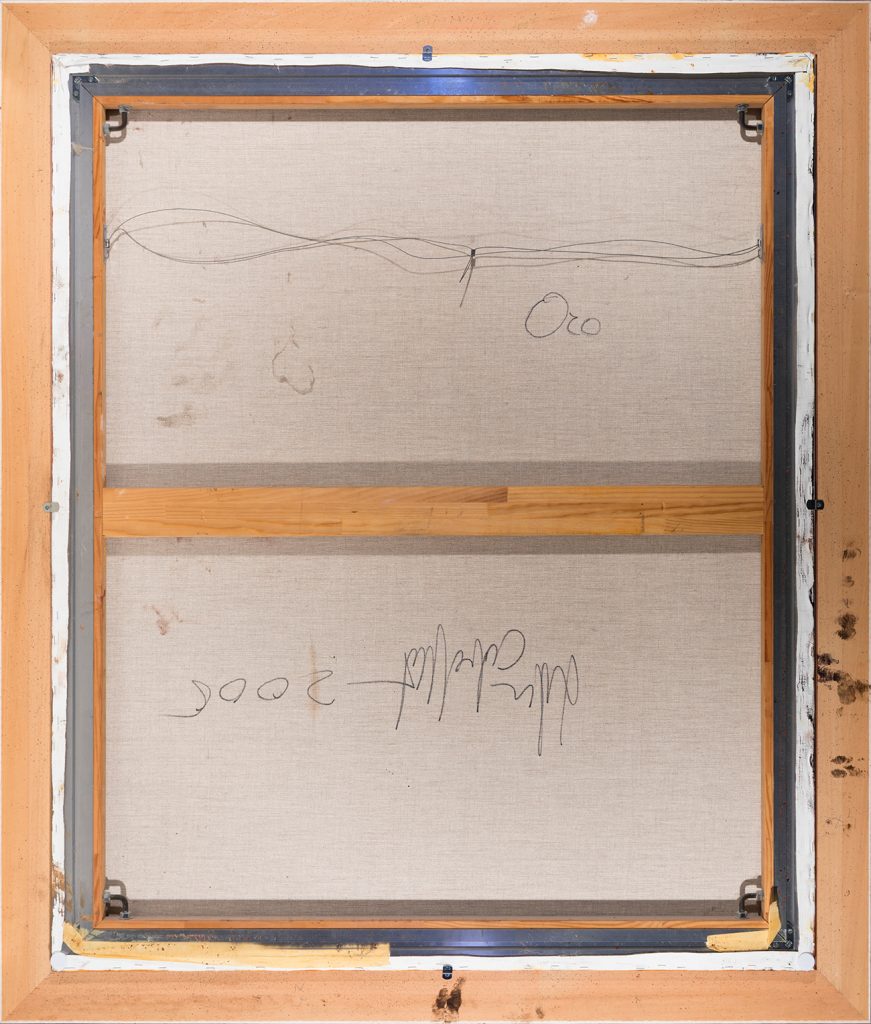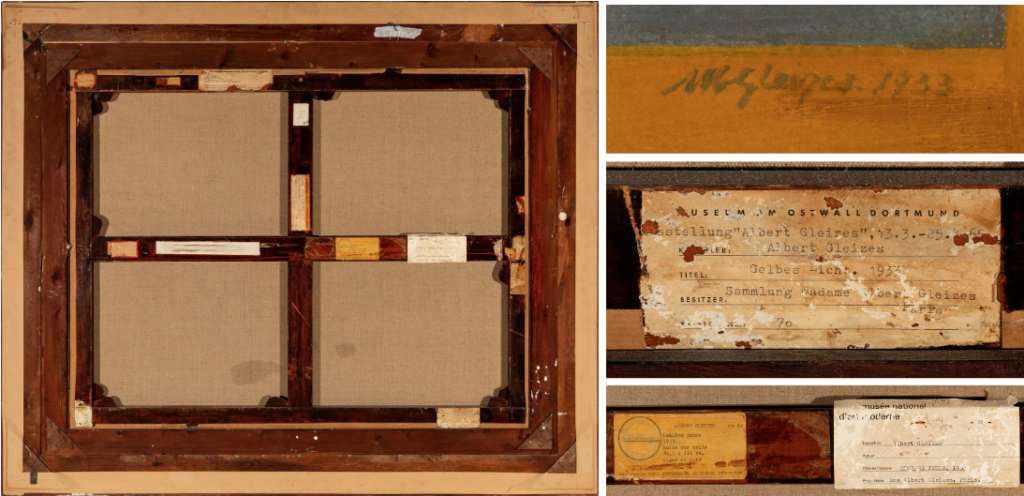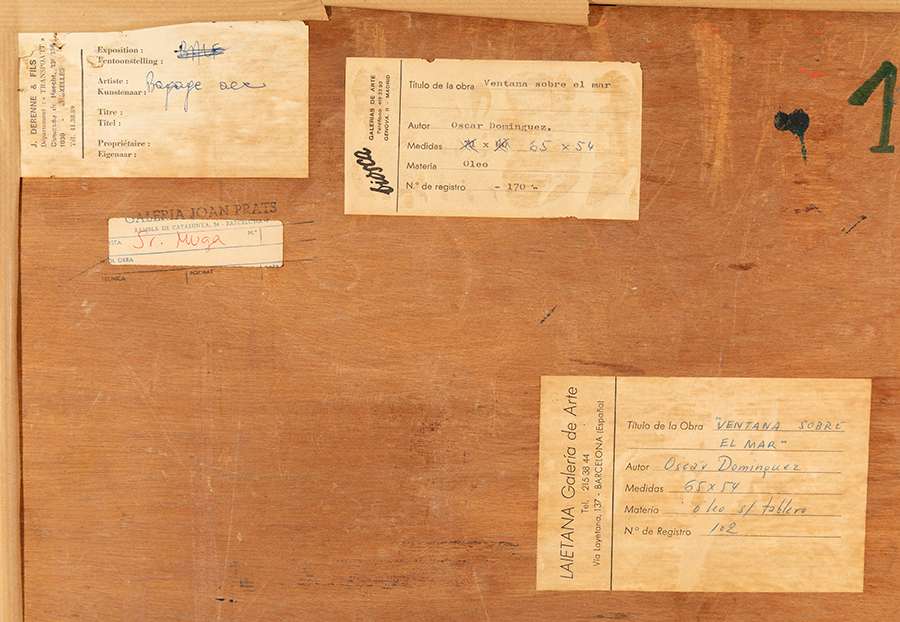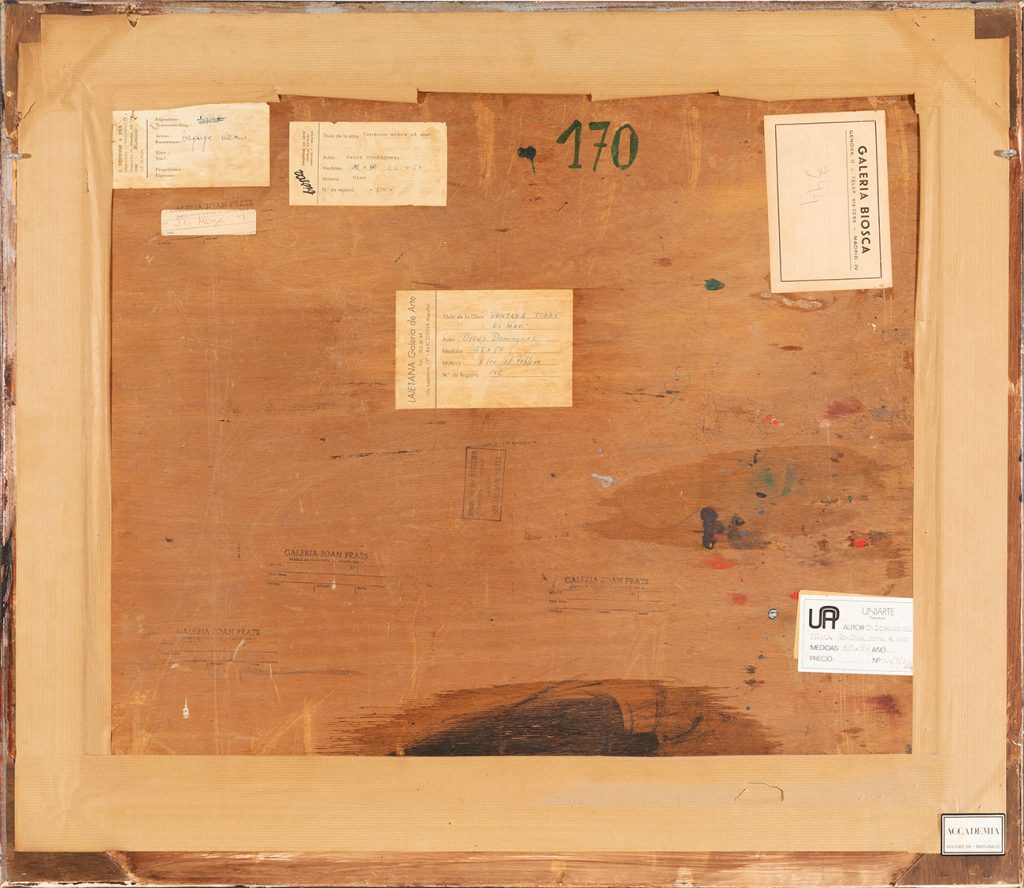The back of a painting may seem a secondary or irrelevant part of a work of art, but for historians, collectors and experts, it represents a real archive. It is here that traces can be found that allow us to reconstruct the origin of a painting, confirm its authenticity or understand its historical and commercial value.
In this article we explore why the back of a painting deserves attention and what kind of information can be found on the back of a painting.
1. Data written by the artist

Although the signature is usually on the front, many artists, especially since the 20th century, have noted their name, title, date of execution and even their address on the back of a work of art. It is also common to find the name of the original purchaser or technical indications.
These annotations, handwritten in many cases, are fundamental to understand the context of creation and to answer one of the most frequent questions in the art world: how to know if a painting is original.
2. Materials that help to date the artwork
The type of frame, the wood used or the fasteners provide clues as to the time and place of production. For example, in southern Europe softwoods such as pine were used, while in the north oak predominated.
It is also common to find labels from canvas manufacturers or seals from suppliers, which provide relevant technical data. The transition from the use of nails to staples, or the appearance of supports such as masonite, are hidden details in works of art that allow us to delimit chronologies.
3. Exhibition labels and catalogs: history on the back of the painting.

A work that has been exhibited or included in institutional collections may have labels on the back with the artist’s name, inventory number or lender’s information. These elements allow the piece to be traced through museums, galleries or art fairs.
In some cases, the works retain customs or cultural institution control stamps. In Spain, for example, many pieces protected during the Civil War by the Junta de Incautación del Tesoro Artístico (Artistic Treasure Seizure Board) retain unique inscriptions or labels documenting their rescue.
4. Brands of private collectors
Previous owners have also left marks on the back of a painting. These can be stamps, initials, inventory numbers or simple pencil notations. Identifying previous owners-especially if they were dealers, aristocrats, or well-known collectors-adds historical and economic value to the work.
These types of marks are part of the object’s biography and are key to understanding its trajectory in the art market.
5. Auction signals and secondary market
Many works have labels on the back with auction house lot numbers or codes. Although they may appear to be simple stickers, they allow you to consult old catalogs, sale dates and prices.
These records help to reconstruct the evolution of the value of the work and are an essential part of its history. The information collected on the back of a painting can even revalue pieces that had gone unnoticed.
6. Images and writings hidden in the back of the work.
In some cases, the back contains preparatory drawings, technical annotations or even a second painting. For centuries, artists reused canvases and supports for economic or experimental reasons.
Thanks to techniques such as radiography or infrared reflectography, these elements have come to light, revealing phases of the creative process or unpublished compositions. These findings are one of the most fascinating examples of the details hidden in works of art.
7. Information on the state of conservation


Stickers, patches, stains, conservation instructions or restorers’ notes are part of the material history of the piece. In some cases, the artist himself leaves indications on how to hang or protect the work.
Analyzing these elements on the back of a painting allows us to understand previous interventions, damage or environmental problems that may have affected its structure.
The documentary value of the reverse side of a work of art
The back of a painting is not a simple support, but a key source for understanding the history and value of a work of art. If rigorously analyzed, it can provide answers about its provenance, authenticity, conservation, and path.
Whether you are a collector or you are interested in art from a technical or historical point of view, looking at the back of a painting is an essential practice. Many times, the answers are right where we don’t usually look.
Want to start or expand your collection? Explore Setdart’s auction calendar or online catalog and find a piece with history and value.



